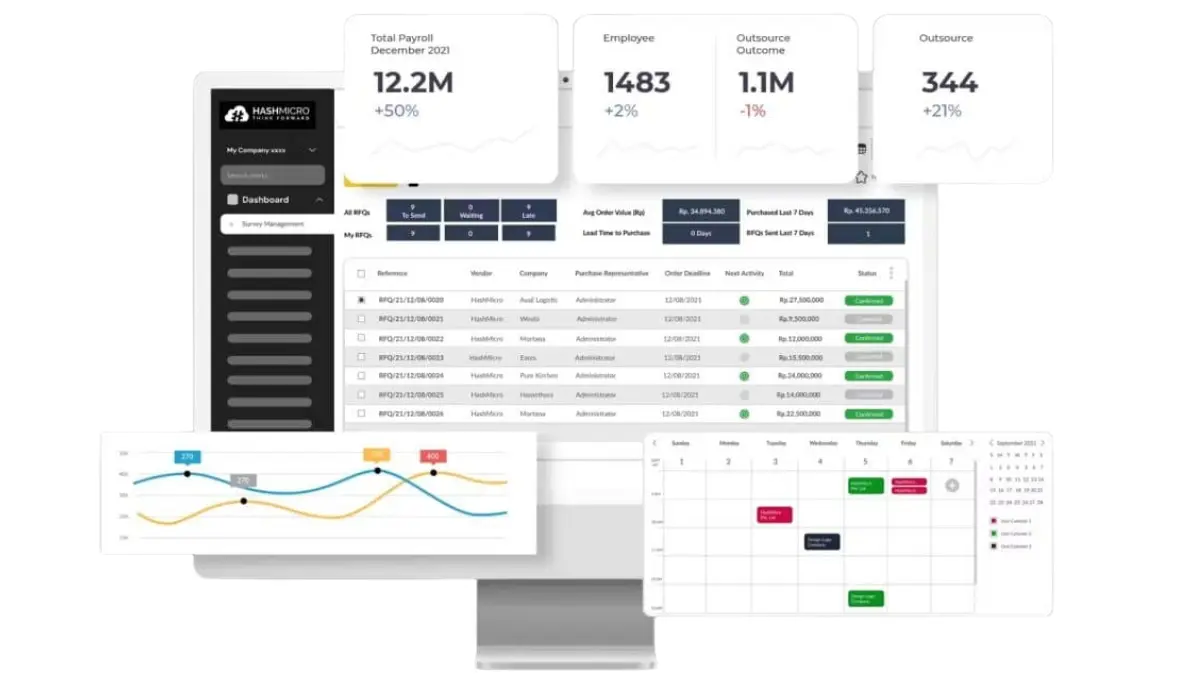Ever felt stuck in a business idea, unsure how to make it work? You’re not alone. Many Filipinos miss out on big opportunities simply because they don’t realize how powerful the distributor business can be.
Think about it: Distributors are the bridge between producers and consumers. Without them, the products we use every day wouldn’t make it to the stores or homes. In every industry, distributors are the key to keeping things moving, making sure that goods go from manufacturers to retailers or customers.
And guess what? You could be the one making it happen. Want to know how to become a successful distributor in the Philippines? Keep reading to discover the strategies and tools that can help you build a thriving distribution business from the ground up.
Key Takeaways
|
Table of Contents
What is a Distributor?

A distributor is a business or individual that purchases goods directly from producers and then distributes them to retailers or final consumers. While manufacturers may produce products, it’s distributors who ensure these products reach the market by handling storage, transportation, and sales.
They benefit from discounted prices when purchasing in bulk from manufacturers, creating an opportunity for profits through markups. Smaller retailers typically do not buy directly from producers, relying instead on distributors for a more manageable transaction.
Roles and Functions of a Distributor Business
Distributors play a crucial role in ensuring the smooth flow of products from producers to consumers. Their tasks range from purchasing goods to marketing them effectively, and each function is key to keeping the distribution strategy process efficient.
Here’s a breakdown of these essential functions:
- Purchasing and Storing Products: Distributors buy goods in bulk from manufacturers and store them properly to maintain quality until they are sold.
- Competitive Pricing and Transporting Goods: They offer competitive pricing to attract customers and manage logistics to ensure efficient product delivery.
- Classifying Products and Providing Information: Distributors sort products based on type and quality for easier inventory management and provide product details to boost sales.
- Promoting Products: They engage in marketing activities like promotions and product demos to raise awareness and attract customers.
In summary, distributors are not just intermediaries; they are key players in ensuring that products move efficiently through the supply chain. Their ability to manage these tasks effectively can make or break a distribution business with software.

Benefits of Being a Distributor Business Owner
Being a distributor offers several key benefits that can lead to a stable and profitable business. Here are the main advantages of pursuing a distributor business:
- Fewer Customers to Manage: Unlike retailers, distributors don’t need to juggle a large customer base. They focus on building strong relationships with a select group of retailers, ensuring steady and consistent revenue.
- Easier Client Relationship Building: Distributors often develop long-term relationships with their retail clients, reducing the need for constant client acquisition. This loyalty creates a stable business environment and consistent income.
- No Need for Diverse Products: Distributors can focus on a specialized range of products, rather than handling a vast variety. This allows them to streamline operations and achieve greater efficiency.
In summary, being a distributor simplifies business management and offers greater focus, long-term client relationships, and stable growth potential.
Distributor vs. Wholesaler
A distributor acts as an intermediary between manufacturers and retailers or consumers, handling the logistics, storage, and marketing of products. They often build long-term relationships with retailers, providing product information and ensuring a steady supply of goods.
Distributors may also offer additional services such as product promotions and after-sales support. On the other hand, wholesalers typically focus on buying goods in bulk from manufacturers and selling them to retailers at a lower price.
Unlike distributors, wholesalers generally don’t engage in promotional activities or maintain ongoing relationships with retailers. Their primary goal is to sell large quantities of products at competitive prices.
How to Become a Successful Distributor Business Owner

Now that you understand the difference between a distributor and a wholesaler let’s explore the key steps to becoming a successful distributor. These strategies will help you build a solid foundation for your business and drive long-term success. Those 7 steps are:
Expand your distributor business network
Building a strong distributor network is essential for business growth. Start by attending industry events and networking online to connect with potential retail partners.
Offer special terms or discounts to smaller retailers to build long-term relationships. The more partnerships you establish, the broader your market reach will become, helping to move products more efficiently.
Offer competitive prices
Offering competitive prices is key to securing repeat business. Research your competitors’ pricing strategies and set a structure that maintains healthy margins while providing value.
Consider offering volume discounts or running limited-time promotions to attract more buyers. Regularly review and adjust your pricing to stay competitive and meet market demands.
Speed up product turnover
Speeding up product turnover helps reduce warehouse clutter and keeps cash flow steady. Implement strategies like flash sales or limited-time offers to create urgency for buyers.
Consider drop shipping to minimize storage time and move products faster. Keep track of slow-moving inventory and offer discounts to encourage quicker sales.
Master negotiation skills
Strong negotiation skills help secure favorable terms with manufacturers and suppliers. Research your supplier’s needs and be clear on your objectives before entering negotiations.
Ask for volume discounts or early payment terms to improve profit margins. Building good relationships with suppliers can lead to better deals in the future.
Optimize logistics management
Efficient logistics management ensures timely delivery and cost savings. Use a transportation management system (TMS) and distribution ERP to track orders in real-time and optimize routes.
Regularly assess supplier performance to minimize delays and improve service. Partnering with third-party logistics providers can also streamline your distribution process.
Excel in key account management
Focus on building strong relationships with your top clients to ensure long-term business. Understand their needs by tracking purchase history and offering personalized solutions.
Set up regular check-ins to maintain customer satisfaction and address any concerns. Reward loyal customers with exclusive deals to keep them coming back.
Implement effective marketing strategies
FOMO (Fear of Missing Out) tactics can drive sales by creating urgency. Run time-sensitive promotions and use social media to advertise exclusive deals.
Collaborate with influencers or key retailers to increase visibility and product demand. Monitor customer response to refine your marketing strategy and maximize effectiveness.
Manage Your Distribution Business with HashMicro’s Trading & Distribution Software

Running a business smoothly is important for distributors to stay competitive, and using the right software can make this easier. HashMicro’s Trading & Distribution Software helps distributors by managing deliveries in real-time, tracking inventory, and improving overall efficiency.
With built-in logistics and real-time tracking, the software helps distributors make smarter decisions and improve their business. Here are five features of HashMicro’s Trading & Distribution Software:
- Cash Flow Optimization: Easily create and send invoices, ensuring that your cash flow management is smooth and timely.
- Inventory Management: Keep track of stock levels, manage warehouse space, and ensure accurate inventory counts to avoid stockouts or overstocking.
- Program for Customer Retention: Increase consumer loyalty by offering personalized experiences and rewards through integrated programs.
- Digitalization of Procurement Activities: Improve the efficiency of the procurement process, making it easier to manage orders and supplier relationships.
- Easy Report Generation: Simplify the generation of various types of reports, helping you make data-driven decisions quickly.
- Customer Relationship Management (CRM): Build and maintain strong relationships with clients by tracking customer interactions and offering personalized services.
By utilizing a comprehensive Trading & Distribution system, you can optimize your distribution business operations, stay competitive, and ensure sustainable growth in a dynamic market.
Conclusion
In conclusion, becoming a successful distributor requires understanding key strategies and having the right tools in place. By focusing on building relationships, optimizing logistics, and offering competitive prices, distributors can thrive. Utilizing the right software, like HashMicro’s Trading & Distribution Software, will help streamline operations and boost efficiency.
Ready to take the next step in growing your distribution business? Try HashMicro’s free demo today and see how it can help you succeed.

FAQ Around Distributor Business
-
What type of company is a distributor?
A distributor is a company that purchases goods from manufacturers and sells them to retailers or consumers. They manage storage, transportation, and often marketing to ensure products reach the market efficiently.
-
What is an example of a distributor?
An example of a distributor is a company that supplies electronics to retail stores. They purchase products from manufacturers and distribute them to various retailers for sale to consumers.
-
Which distributorship is most profitable?
The most profitable distributorship often involves high-demand, high-margin products like technology or pharmaceuticals. Specializing in these industries can lead to steady, lucrative returns due to their consistent market demand.




































